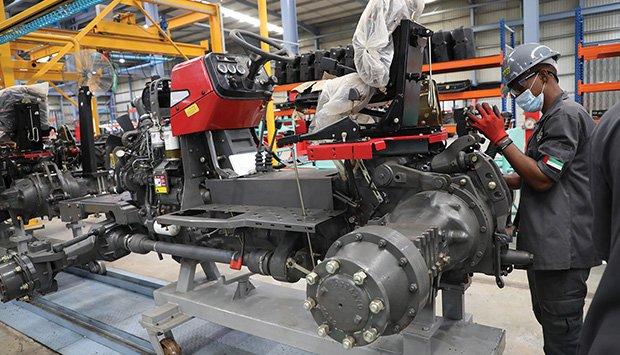Africa-Press – Angola. The Angolan economy grew by 0.7 percent in 2021, reversing a cycle of recession that had plagued the country since 2016, after having registered an economic expansion of 2.2 percent in the last quarter of that year, according to released data, this Friday, in Luanda, by the National Statistics Institute (INE).
According to INE, the growth observed in the last quarter of 2021 benefited from the 0.9 percent expansion in the third quarter, offsetting the negative growth of 0.47 and 0.13 percent recorded in the first two quarters of 2021.
The activities that contributed positively to the change in GDP in the fourth quarter compared to the third quarter of 2021 were Fisheries, with 0.29 percentage points, Oil extraction and refining, with 0.25 points, Diamond mining and other activities. with 0.53 points.
Transport and storage, with 0.61 points, Financial intermediation, with 0.03 points, Real estate and rental services, with 0.41 points, and Other services, with 0.07 points, also contributed to the expansion of the last three months. last year.
Looking at the total for 2021, INE writes that “GDP accumulated throughout the year until the fourth quarter of 2021 grew by 0.7 percent compared to the same period in 2020”, attributing the positive change, the first since 2015, “fundamentally, agriculture and forestry activities with 5.1 percent; Fisheries with 46.4; Diamonds with 10.4; Manufacturing industry with 0.6; Electricity and water with 1.8; Trade with 13.5; Transport and storage with 28.9; Post and Telecommunications with 1.4; Public Administration with 2.6% and Real estate and rental services with 3.0%.
In January, when it released the National Accounts for the third quarter of 2021, INE declared that the Gross Domestic Product (GDP) increased by 0.5 percent between the second and third quarter of 2021 and grew by 0.8 percent in the third quarter, comparing with the same period in 2020, interrupting nine quarters of successive declines.
In cumulative terms, from January to September, the sectors that most contributed to the increase in GDP were Fisheries, with an increase of 50.9 percent, followed by Transport and Storage (21.9); Trade (17.7), Diamonds (5.7); Agriculture and Forestry (5.6); Public Administration (3.3), Post and Telecommunications (3.1), Real Estate and Rental Services (3.0) and Electricity and Water (1.6 percent).
Confirmed Forecasts
Also last January, the World Bank released forecasts according to which the Angolan economy will grow by 3.1% this year (above the estimate of 2.4 adopted by the Government) and that it will slow down slightly to 2.8 in 2023.
The report on “Global Economic Perspectives” released at that time, a document that is updated in April, already predicted (even before the consolidation of the accounts, the exit of Angola from recession in 2021, the year for which it anticipated an economic expansion of 0, 4 percent.
In the document, the World Bank projected for the three largest economies in the sub-Saharan region (Angola, Nigeria and South Africa) a combined growth of 3.1 percent last year, reflecting an improvement on previous estimates, noting that Angola’s growth and Nigeria was supported by the recovery in the non-oil sector, “with oil production in the region continuing below pre-pandemic levels due to disruptions in maintenance work and declining investments in extractive industries”.
The pandemic “has reversed progress on poverty reduction and on several flagship development goals across the region, undoing more than a decade of gains in ‘per capita’ income in some countries.”
In Angola, Nigeria and South Africa, among others, per capita income “is expected to remain lower in 2022 than it was a decade ago,” economists warned earlier this year.
For More News And Analysis About Angola Follow Africa-Press






